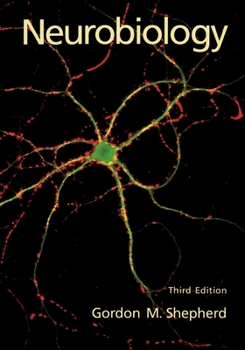Neurobiology
Select Format
Select Condition 
Book Overview
This widely used and highly praised textbook has been extensively revised to reflect the most exciting research across the entire range of neuroscience. A new feature is an introductory discussion of the mechanisms of gene regulation, while the superfamily of molecules responsible for membrane signaling is given new emphasis as a unifying theme throughout molecular and cellular neurobiology. The roles of these molecules in impulse conduction and synaptic transmission are fully explained, and illustrated by computer models. For the first time in a neurobiology text, these mechanisms can be explored by using a state-of-the-art interactive computer program provided with an accompanying tutorial handbook. In the sections dealing with neural systems, the comparative approach continues to be used to illustrate general principles. Students learn about the progress being made toward a molecular basis for sensory perception and new methods for revealing the neural activity underlying sensory and motor functions are described. There is an emphasis on the plasticity of both sensory and the motor circuits in mediating functions that reflect the effects of activity or recovery from injury. Central systems continue to be featured as the culmination of neural evolution. These include the systems vital for all animals, such as sleeping, feeding and reproduction, as well as the systems for language, emotion and higher cognitive functions that reach their peak in humans. There is special emphasis on recent work on memory, contrasting the mechanisms for short-term working memory and long-term memory and summarizing the present understanding of the mechanisms of long-term potential. The twin themes of organizational levels and comparative systems help bring together the vast range of studies and provides a conceptual framework that unifies the field of neurobiology. As in previous editions, the text continues to draw on the advantages of having a single author. In addition, leaders in a number of specialties have assisted the author, so that the text represents the most up-to-date views of current research on the nervous system.
Format:Paperback
Language:English
ISBN:0195088433
ISBN13:9780195088434
Release Date:May 1994
Publisher:Oxford University Press
Length:776 Pages
Weight:3.01 lbs.
Dimensions:1.5" x 7.0" x 10.0"
Customer Reviews
2 ratings
Great intro neuro book.
Published by Thriftbooks.com User , 15 years ago
This is a great intro neuroscience book. I bought it to help give me some background when I joined a neuroscience lab as an undergrad. I have never taken a pure neuroscience class so this book helped tremendously in building my foundation for more advanced topics. This book is not exhaustive by any means and is heading towards the out-of-date side given of the advancements in the field to date. Probably great for an undergrad or beginning grad student.
A self-contained introductory book in neurobiology.
Published by Thriftbooks.com User , 27 years ago
Clearly superior to most of its competitors, this book will serve as a basic introductory text for medical students, as well as advanced undergraduate and graduate students in the biomedical sciences. Shepherd does a wonderful job in explaining core concepts in neuroscience, ranging from the cell, to brain systems, to behavior. Many of the chapters, especially in molecular and cellular neurobiology, will clarify certain 'dark' concepts, essential not only for neuroscience, but for physiology, pharmacology and immunology as well. This should be one of the standard texts for every student interested in the nervous system, and in integrative science in general.






